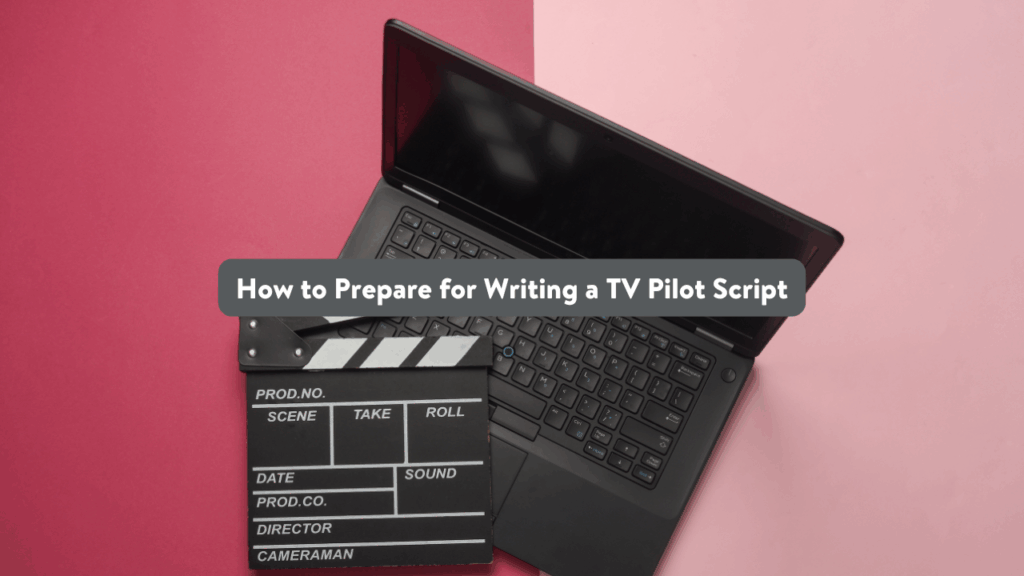How to Actually Finish Your TV Pilot Script

Starting a script is easy. Finishing one? That’s the part where most writers fall off. Whether you’re writing a comedy, a grounded dramedy, or something totally out-there, none of it matters if you can’t get past page 10.
In a recent pilot-writing workshop with GOLD, I broke down the exact steps screenwriters need to take to actually finish their pilot. Not perfectly. Not brilliantly. Just finished. Because you can’t fix a blank page—and you definitely can’t pitch one.
Here’s how to get to the sweetest three words in all of screenwriting: END OF EPISODE.
1. Have a clear concept
You need to come in knowing what you’re writing. That sounds simple, but so many writers get stuck right here. It’s not enough to say, “I want to write a show.” You have to know what kind of show—and what it’s really about.
Before you type a word, ask yourself:
- Is this a half-hour or an hour?
- What’s the genre and tone?
- What’s the premise—and is there a show beyond episode one?
- Does this idea actually have legs?
You need to come into the drafting stage knowing a few things. You need to have a nugget of an idea.
That nugget doesn’t have to be polished. It just has to be clear. Because if you can’t explain your show to yourself, you won’t be able to explain it to the audience or to Ayo Edebiri when you’re begging her to star.
2. Use an outline (Seriously)
Let’s stop romanticizing the blank page. Inspiration is great, but structure is how you finish a script. You don’t need to overdo it—but you do need to map out your pilot using a simple, effective 10-step outline.
Break it down like this:
- Act One: Who are we watching? What’s their world? What’s the problem?
- Act Two: Raise the stakes. Complicate the problem. Make it personal.
- Act Three: Resolve (or explode) something, and hint at where the series goes.
Do not sit up here in front of anybody’s free or otherwise paid-for screenwriting software without an outline! Just don’t do it! If you need a little more outlining assistance, read this article your new TV bestie (me) worked up specifically for you.
Your outline is the safety net. It saves you from writing 30 pages of “vibes” with no story. (Every writer’s greatest fear.) Use it to track emotional arcs, plot beats, and how your characters are introduced.
3. Make it about the relationships
The truth is, your pilot is always going to come back to character. Even if it’s high-concept. Even if there’s time travel. It’s not about the hook—it’s about how your characters connect, clash, and change each other.
Ask yourself:
- What are the core dynamics?
- Who’s your protagonist leaning on or pushing against?
- Where’s the conflict, and where’s the love?
- What makes this group of people feel real?
No matter what, your show is always going to be about relationships. If your pilot doesn’t make us care about the people, we won’t come back for episode two.
4. Write the bad version first
This is the part writers hate to hear—but love once they accept it. Your first draft is going to be a little messy. That’s not a failure. That’s the process.
- Let it be clunky.
- Let the dialogue feel obvious.
- Put in exposition that makes you cringe.
Write the bad version. Put in the stupid or the most obvious thing. Just put the exposition right in there. The point is to get it down. You can’t improve what doesn’t exist. So stop trying to write perfect scenes before you’ve written any scenes. That’s what later drafts are for!
5. Don’t keep rewriting page one
One of the fastest ways to stall your pilot is by constantly reworking the first five pages. You polish and polish—and never get past the intro.
So here’s the rule: keep moving forward.
- Don’t reread from the beginning every writing session.
- Don’t open your notes first.
- Start from where you left off, even if it’s awkward.
Don’t start your writing day with reading the notes, it’ll just bog you down. Start with where you were last night and KEEP TYPING.
Momentum beats perfection every time. You can fix it later—but only if you finish.
6. Make finishing the goal
Let’s be real, no one’s getting staffed off an outline. Certainly not anymore! You can’t submit “almost finished” to a fellowship. The only thing that matters is a completed script.
To get there:
- Set realistic goals (3–5 pages a week is plenty)
- Break your process into manageable chunks
- Keep your focus on progress, not polish
The whole point of this is to sit down, forget all the noise, and actually leave every sitting with no blank screen. Don’t worry about if it’s genius. Worry about whether it exists. A finished draft opens doors. An idea in your head doesn’t.
7. Stop obsessing over theme
Writers love to stress about theme. And sure, your pilot should say something. But if you lead with that…if you’re trying to write a thesis statement instead of a story…you’re gonna stall out in Act Two. Every time.
Focus on:
- Who your characters are
- What they want
- What gets in their way
That’s right, I’m telling you: don’t over obsess about themes. Focus on what matters: What’s your story? And how are we getting this across on the page?”
The theme will show up, trust me. But let it come through action and choices—please no heavy monologues in the first ten pages.
Bottom line: Get the pages out
There’s no trick. There’s no shortcut. The only way to write a great pilot is to write a complete one—and that means pushing through the middle, ignoring the inner critic, and not being afraid to get messy.
Every script you love started as a rough draft. So the next time you sit down, don’t try to make it perfect. Just try to make it done.
Ready to finally finish that pilot? Join LaGina Hill’s GOLD Label course, Finish Your Pilot, starting July 12, 2025. Whether you’re stuck on page one or deep in rewrite limbo, this focused, no-fluff workshop will get you to a complete draft—fast. Let’s get it done.




